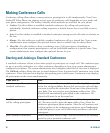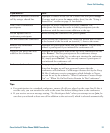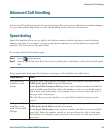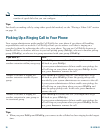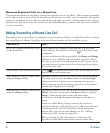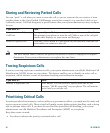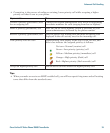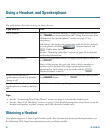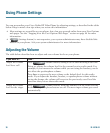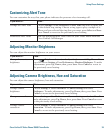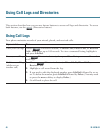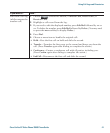
34 78-16798-02
Storing and Retrieving Parked Calls
You can “park” a call when you want to store the call, so you or someone else can retrieve it from
another phone in the Cisco Unified CallManager system (for example, at a coworker’s desk or in a
conference room). Call Park designates a special feature that your system administrator may configure
for you.
If you want to... Then...
Store an active call by using
Call Park
During a call, press Park (you may need to press the more softkey first).
This prompts your phone to store the call. Make a note of the call park
number that displays on your screen and hang up.
Retrieve a parked call From any Cisco Unified IP Video Phone in your network, enter the call
park number to connect to the call.
Note You have limited time to retrieve the parked call before it reverts to ringing at its original
destination. Your system administrator can explain this time limit.
Tracing Suspicious Calls
If you are receiving suspicious or malicious calls, your system administrator can add the Malicious Call
Identification (MCID) feature to your phone. This feature enables you to identify an active call as
suspicious, which initiates a series of automated tracking and notification messages.
If you want to... Then...
Identify a suspicious call Press MCID. You will receive a special tone and see the
message, “MCID successful” on your phone. The call remains
active until you end the call.
Prioritizing Critical Calls
In some specialized environments, such as military or government offices, you might need to make and
receive urgent or critical calls. These critical calls might require higher priority handling, such as being
able to preempt other calls. If you have the need for this specialized call handling, your system
administrator can add Multilevel Precedence and Preemption (MLPP) to your phone.
Keep these terms in mind:
• Precedence indicates the priority associated with a call.



